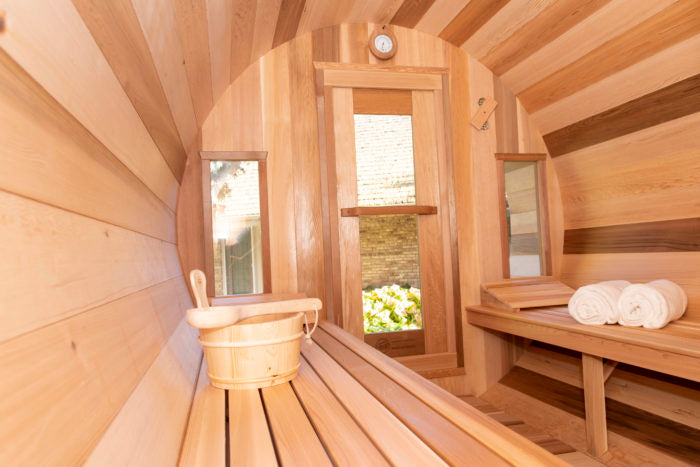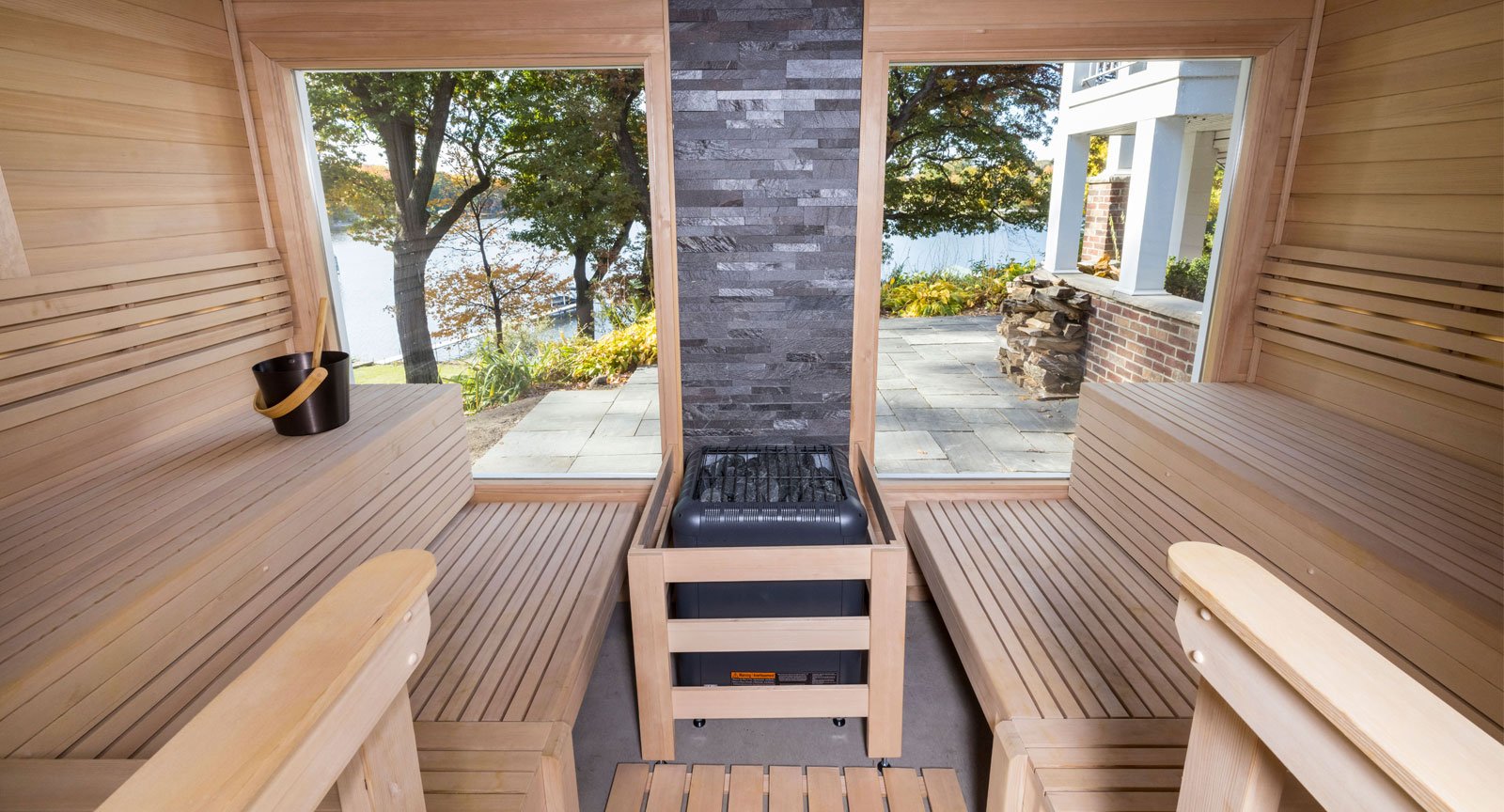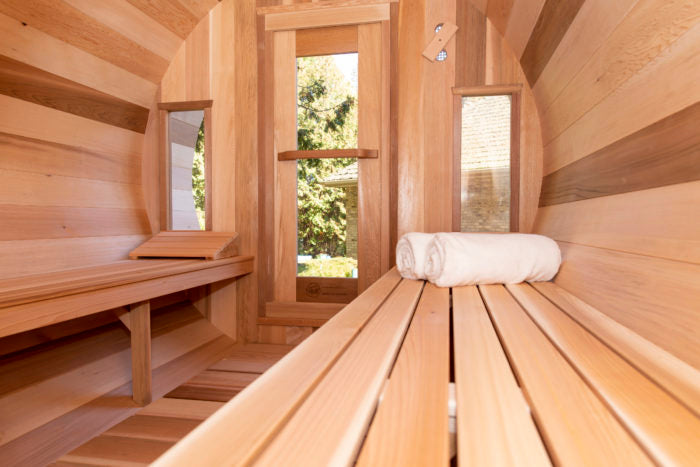Things about Traditional Sauna
Things about Traditional Sauna
Blog Article
About Traditional Sauna
Table of ContentsTraditional Sauna Things To Know Before You Get ThisWhat Does Traditional Sauna Mean?Traditional Sauna - An OverviewTraditional Sauna - QuestionsLittle Known Questions About Traditional Sauna.
Most of the weight lost in a sauna is water loss and is re-gained upon rehydrating. Nonetheless, without a doubt sauna can be a fundamental part of a healthy and balanced weight-loss program. To consider the distinctions in between typical and IR saunas, I will divide these right into verifiable, theoretical, and fabricated differences.Thus, the hottest point in the saunawhich goes to the ceiling directly above the sauna heateris generally between 185 and 190 F. Claims that a conventional sauna goes beyond 200 F is merely not real and not appropriate for electric saunas marketed in the United States. The temperature for a far-infrared sauna is typically established in between 120 and 140 F; however, unlike the traditional sauna, the goal in and IR room is not to attain a heat.

When a standard sauna has actually been appropriately warmed, the sauna wall surfaces are warm, the air temperature level has achieved established temperature and the rocks are super warmed. As an intriguing side note, the heated wall surfaces and the rocks are emitting far-infrared warmth, integrated with the warmed air, to create an "covering warm".
6 Simple Techniques For Traditional Sauna
When the high temperature level is attained, the aspects cycle on and off to keep the heat. The majority of conventional sauna users appreciate pouring water over the rocks to create heavy steam to elevate sauna humidity levels. The advantages of putting water over the rocks include: making the space more comfortable, dampening the nasal flows, and enabling the usage of aromatherapy by blending necessary oils with the water.

When the energy enters the body, it creates the body temperature to increase and ultimately leads to sweating. In an infrared sauna it is very important for the have a peek here emitters/heaters to stay on virtually regularly. Because there is no mass of rocks to preserve warmth, the sauna will cool if the emitters shut down.
The Best Guide To Traditional Sauna
As discussed over, the sauna bather in an infrared room wants to position himself in front of operating emitters to get maximum gain from the heat. The heating time for both rooms can be very various, depending on just how the areas are made use of. For a conventional sauna, a bather should allow 30-40 minutes for the room to attain a desired temperature and to correctly pre-heat the rocks.

A well created sauna will commonly attain a temperature level of 150-160 F in concerning 30-40 mins (Traditional Sauna). For hotter temperature levels, the space might require to warm for a longer period. Once the area achieves set temperature, the heater will certainly cycle on and off, typically operating concerning 50% of the moment. The protected walls and the heated rocks will certainly maintain the room hot and at secure temperatures.
To some, 15 minutes was "wasted" while the infrared power heated the timber panels as opposed to heating up a body, while others discover a pre-heated space to be more comfy and think a raised beginning temperature is necessary to start perspiring. The size of advised use for every room is around the same (10-15 minutes per session); nevertheless, due to the reduced air temperatures and the ability to feel the impacts of infrared warm faster than see this a traditional sauna, it is not uncommon for a person to invest an overall of 20-30 mins in an infrared sauna.
Some Ideas on Traditional Sauna You Need To Know

The ordinary price per kWH of electricity in the united state is roughly $0.11, so a 4.5 kW heating system will certainly cost approximately $.50 to compete one hour, if the heater runs continuously for one hour. Normally a sauna heating unit will certainly run for 75% of the very first hour and 50% of subsequent hours on since the components cycle once the established temperature is attained.
A two person far-infrared area is normally physically smaller than a traditional sauna, commonly regarding 4' x 4' or smaller. The IR furnace is usually 1.5-1.7 kW making use of a 120 volt 15 amp plug-in service. Considering that the room can be made use of sooner than a sauna area, we will certainly think the area is used for to of an hour including heat up time.
There is a rarely talked about distinction in the social experience in between the two rooms. While our society has lost some of the social advantage of the conventional sauna experience, it can try this out be extremely socially fulfilling (Traditional Sauna). From household time in the sauna, to heart-felt conversations with loved ones, to sauna partiesthe standard sauna experience can result in intimate socializing
Some Known Factual Statements About Traditional Sauna
The majority of greater end infrared areas include colored light treatment, stereo and full-glass fronts. The dimension of the majority of rooms permit for 2 individuals to conveniently utilize the area, while some designs might enable a third or fourth individual to use the area. Custom-made infrared areas are likewise offered, with area dimensions offered approximately 7' x 8' x 7' high.
Report this page